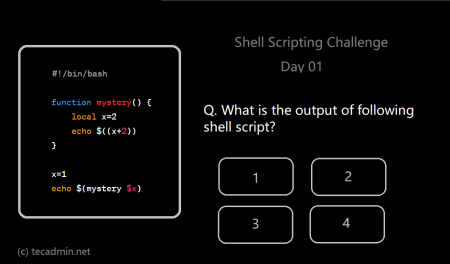Bash, the Bourne Again SHell, is a powerful scripting language used extensively in the Unix and Linux worlds. It offers an extensive range of functionalities, from simple commands to complex scripts that automate large tasks. One of the key features of Bash scripting is conditional execution, where the if-else statement plays a crucial role. Traditionally, if-else statements in Bash scripts are written across multiple lines. However, for those looking to streamline their scripts or write more concise one-liners, mastering single-line if-else statements can be incredibly useful.
Understanding If-Else in Bash
The if-else statement is a control flow statement that allows Bash scripts to execute commands based on certain conditions. The basic syntax in a multi-line format is as follows:
if [ condition ]; then
# commands if condition is true
else
# commands if condition is false
fi
This structure works well for readability, especially in complex scripts, but can be overly verbose for simpler conditions or when trying to keep scripts compact.
The Power of Single-Line Syntax
The single-line if-else statement condenses the traditional multi-line approach into a one-liner, making your scripts more succinct and easier to manage. Here’s the basic syntax:
[ condition ] && command1 || command2
In this syntax, command1 executes if the condition evaluates to true, and command2 executes if the condition evaluates to false. It’s a streamlined way to implement conditional logic without the need for multiple lines.
Practical Examples
Here are a few examples of how single-line if-else statements can be used in Bash scripting:
- File Existence Check:
[ -f /path/to/file.txt ] && echo "File exists." || echo "File does not exist." - Permission Check:
[ -w /path/to/file.txt ] && echo "Writable" || echo "Not writable" - Variable Comparison:
[ "$a" -eq "$b" ] && echo "Equal" || echo "Not equal"
Tips for Using Single-line If-else Statements
- Understand Command Evaluation: Bash evaluates commands from left to right. The || operator acts only if the preceding command (command1) fails, making it crucial to ensure that command1 does not mask potential errors.
- Use for Simple Conditions: Single-line statements are best suited for straightforward conditions. Complex logic or conditions requiring multiple commands are better handled with the traditional multi-line approach.
- Beware of Pitfalls: The single-line approach can lead to unexpected behavior if not used carefully. For instance, if command1 fails, Bash will execute command2, which might not be intended if command1’s success is not strictly related to the condition being true.
Conclusion
Single-line if-else statements in Bash scripting offer a compact, efficient way to handle conditional logic. By understanding the syntax and appropriate use cases, you can enhance the readability and maintainability of your scripts. Remember, the key to mastering Bash scripting is not just knowing different commands and syntaxes but also when and how to use them effectively. With practice, you can streamline your Bash scripts to be both powerful and elegant.



